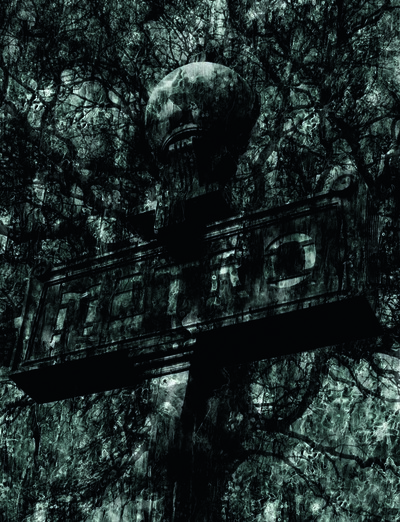Why making higher quality products in fewer numbers makes sense.
By Mesh Chhibber
Illustration by François Berthoud
Why making higher quality products in fewer numbers makes sense.

After over more than 20 years working in fashion communications, first for John Galliano in Paris (1993-2000) and finally with my own agency, I decided to quit PR and launch a label that makes beautiful objects in leather, with my friend Sofie C. Guerrero, a visual artist and dancer. Fashion in Paris in the 1990s marked the tail-end of a culture and scene that began in the ‘70s with Kenzo, Yves Saint Laurent and Karl Lagerfeld, and continued through the ‘80s at nightspots like Club Sept and Le Palace and with the designers Claude Montana, Azzedine Alaïa and Thierry Mugler. By the end of the ‘90s, the creative scene was replaced by a far more business-minded environment, with conglomerates like LVMH, PPR (now Kering) and Richemont being joined by private equity firms in investing in luxury brands.
As the industry became more financially hard-nosed, it focused on marketing and advertising, where once the emphasis had been design and craftsmanship. It’s extremely hard to produce beautifully crafted products to meet the demands of an ever-increasing audience: Louis Vuitton now has over 400 stores, compared to two in 1970. Gucci, having experienced strong growth under Domenico De Sole and Tom Ford, now has nearly 300 stores, compared to 78 in 1997. However, ecommerce has created an incredible opportunity: as the luxury industry moves to manufacture in lower wage countries in order to increase their profit margins, a space for small-volume brands that care about design and European craftsmanship has emerged.
Sofie and I spent the first eight months after I left my company slowly travelling around Europe by train – with time being a true luxury – as far afield as Ljubljana, and as close as the Cotswolds in England, looking for small ateliers and individual craftsmen who use traditional leather making techniques. One of the things they had in common is that each individual will make the entirety of our first bag, not just a part before handing it over to another person like on a car factory assembly line – and the individual dedication shows.
The work the artisans do is made to last, and the bags they make will be passed on from one generation to the next – something that cannot be said of luxury bags being made today, even when they cost over £1,000. It’s not an issue that these production methods can yield only small volumes for my partner and I. We believe it ensures quality, and our intention is to offer up to four objects a year, each limited to editions of 100. There is little commercial need for vast accessory collections twice a year: brands often refer to the hero bags in their large collections, which makes me question the purpose of the non-hero bags.
Having found skilled craftsmen, we applied the same high standards to the leather. The overwhelming majority of tanneries use the modern chrome tanning method, which is the worst for the environment as chrome is a heavy metal, and during the tanning process forms the carcinogenic compound Chromium VI. We use vegetable tanned leather – a millennia-old process with the least environmental impact – from a Belgium tannery. The vegetable tanned skins come from European cattle farms where the animals are well looked after, which in turn results in skins that are less damaged. Our choice of leather is also aesthetic, as this process shows the skins’ grain, pores, folds and sometimes wounds: a metaphor for life and time which contrasts well with the architectural form of our first object.
The decision to launch the label was fuelled partly from being underwhelmed by the hyper-consumerist society that we’ve become; one reflected in Balzac’s Peau de Chagrin, and its concerns with status, arrivestes with fortunes of dubious origin, and obsession with the decadent consumption of luxury goods. We’ve taken the book’s title as our brand name.
These European craftspeople have a knowledge of and a pride in their work that I fear will disappear within two generations. Their skills will be difficult to revive. Wouldn’t it be more rewarding to buy fewer goods in the knowledge they are genuinely well-made, using methods that have been honed over centuries and, like a Savile Row suit, be treasured from one generation to the next? Real luxury is being able to travel, to read and reflect, and to design and produce beautiful objects crafted to standards of excellence, without thinking of collection plans and seasonal deadlines. Our first bag is being made by a single artisan living in the Swiss Jura.